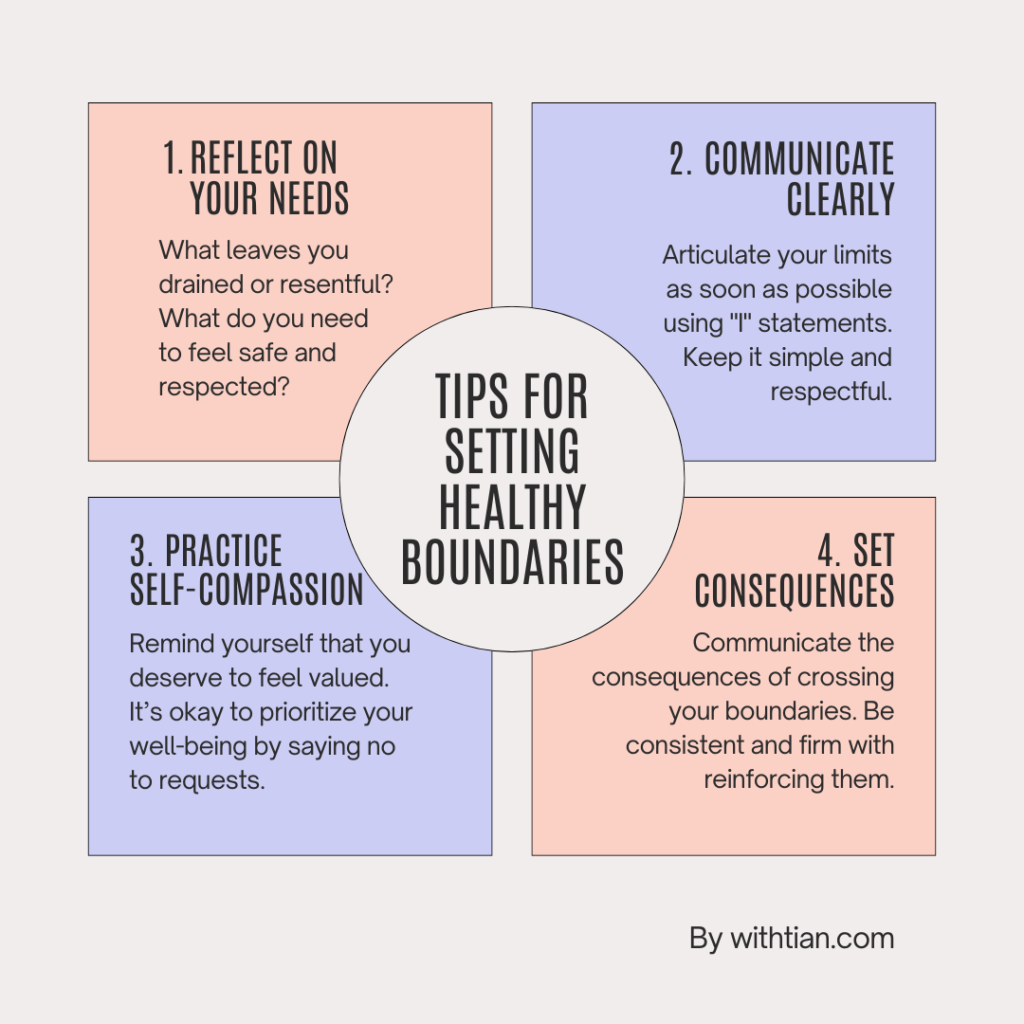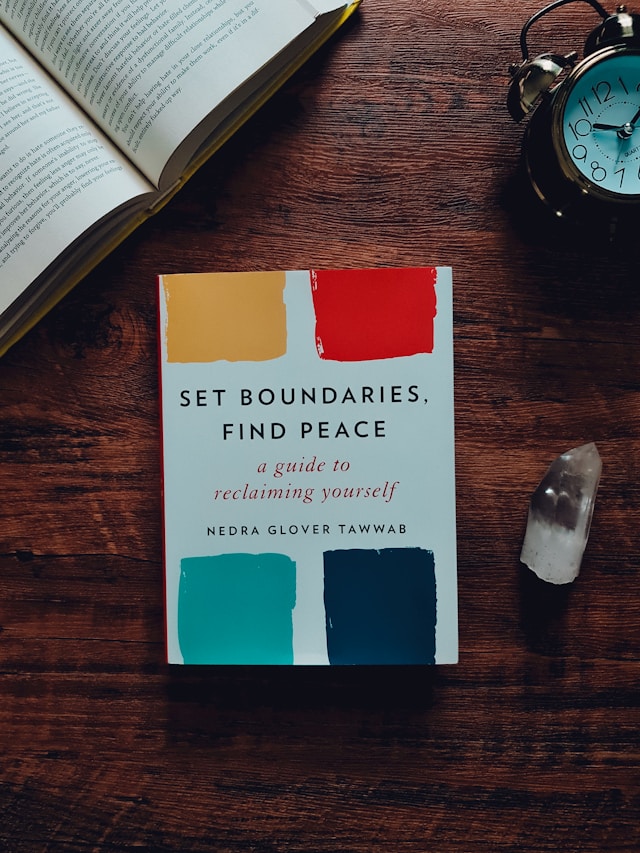
Why do I always feel like there’s never enough time for self-care? How do I balance the pressure of work with the need for relaxation? Maintaining mental and emotional well-being can feel like an uphill battle in today’s fast-paced world. With demands from all directions – work, family, friends, and even social media – it’s easy to feel overwhelmed and stretched thin. However, amidst these challenges lie a powerful tool: boundaries.
What Are Boundaries?
Boundaries are the limits we set around ourselves to define what is acceptable in our relationships with others. They provide a framework for how we expect to be treated and how we respond when those expectations are unmet. Specifically, they can manifest in these forms:
Physical boundaries involve establishing limits on physical touch or proximity. An example is regulating displays of physical affection, such as hugs or handshakes, based on your comfort level.
Emotional boundaries involve restricting how much you share or absorb emotionally. An example is sharing intimate details of your life with only people who have earned your trust.
Mental boundaries involve protecting your thoughts, beliefs, and values. An example is politely declining to engage in conversations or activities that conflict with your values.
Time boundaries involve creating restrictions on how you allocate your time and energy. An example is saying no to additional commitments when your schedule is full.
Digital boundaries involve managing your online presence and interactions. An example is establishing rules for when and how often you check emails.
Material boundaries involve establishing limits on the physical possessions we share. An example is deciding how much money you let a friend borrow and when you expect it to be returned.
Why Are Boundaries Important?
Boundaries enable us to balance giving and receiving in relationships, ensuring constant demands or expectations are not depleting our energy reserves. Without them, we may find ourselves stretched too thin, constantly saying yes to requests that drain us and leave us susceptible to burnout.
What’s more? Establishing limits acts as protective shields against being taken advantage of. By clearly defining our limits, we assert our autonomy and protect ourselves from exploitation. In other words, setting boundaries is an act of self-respect, affirming our worth and signaling to others that our needs are deserving of acknowledgment and consideration.
How to Set Boundaries

1. Reflect on Your Needs: Identify your values, priorities, and limits. What leaves you feeling drained or resentful? What do you need to feel safe and respected in your relationships?
2. Communicate Clearly: People cannot read our minds. As a result, once you’ve defined your limits, communicate them assertively but respectfully to those around you. Use “I” statements to express your needs and preferences without blaming or accusing others. For instance, “I feel uncomfortable when my personal belongings are borrowed without asking. I need to be consulted beforehand to ensure my belongings are respected.” Be firm and consistent in your message. Also, remember to communicate your limits as early as possible to prevent resentment from building.
3. Practice Self-Compassion: Setting boundaries can be challenging, especially if you’re accustomed to putting others’ needs before your own. Remember that it’s okay to prioritize your well-being and say no to requests or situations that don’t align with your boundaries. Practice self-compassion and remind yourself that you deserve to feel respected and valued in your relationships.
4. Set Consequences: Boundaries without consequences are merely suggestions. For this reason, communicate the consequences of crossing your boundaries, whether you withdraw your time and energy, end a conversation, or reassess the relationship altogether. Enforcing consequences reinforces the importance of your boundaries and encourages others to respect them.
Ultimately, setting boundaries is not about building walls or shutting people out; it’s about creating healthy relationships built on mutual respect and understanding. Boundaries are also not set in stone because they evolve as our needs and circumstances change. By defining and enforcing them, we prioritize our well-being and cultivate fulfilling connections with others. So, let’s reclaim control over our lives one boundary at a time.
Recommended Resource

Set Boundaries, Find Peace by Nedra Glover Tawwab is a gem for anyone seeking a deeper understanding of boundary setting and its transformative power. Tawwab’s writing style is not only engaging, but it is also accessible, making complex concepts around boundaries easy to grasp and apply in real life.
What I particularly appreciate about this book is how Tawwab tackles the common challenges we encounter when setting boundaries, such as guilt, fear of conflict, and the tendency to prioritize others’ needs over our own. By addressing these obstacles head-on and providing practical strategies for navigating them, Tawwab empowers readers to reclaim control over their lives and prioritize their well-being without feeling selfish or guilty. Please give it a read!